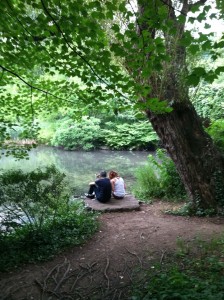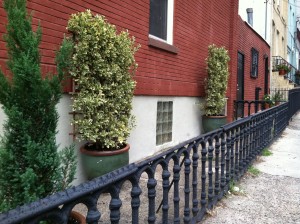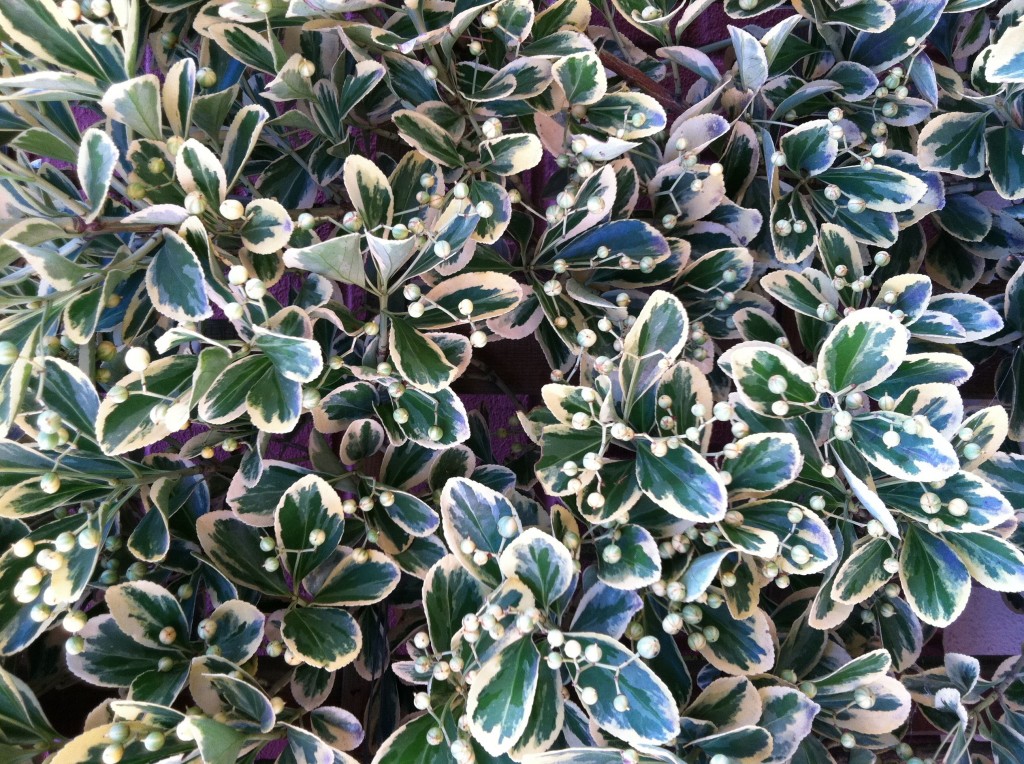Seriously, even the lake, pond, and reservoir are manmade. On a private tour this summer with the Conservancy, the guide pointed out a waterfall tumbling down the side of a majestic outcropping. Then he took us to the source—a pipe atop the rock, gushing out New York tap water. We saw other pipes carrying water into The Pond at the park’s southeast corner—and the drain at the far end.
My point is this. So far I have confined my urban gardening to the stoop, railings, and sidewalk in the front of our rented townhouse. But since we live in a corner building, we also have a long, narrow strip of concrete around the side that runs parallel to the sidewalk. All summer I have longed to install raised beds there, but there are many reasons why that was out of the question—not the least of them, the fence we would have to climb over with buckets full of water carried through the house, since we had no hookup for a garden hose (and there’s no gate in the railing). It was crazy to even think about it. But after this tour of Central Park, I felt like an incredible wimp for not even trying. If Olmsted and Vaux could fill a 2.5-mile-long park with topsoil and even create waterfalls, surely I could at least put a few potted plants in my 125 square feet.
A month later, our landlord agreed to install an outdoor spigot—to water a container garden, not raised beds. At that point, all that remained was to go back to 14th Street Garden Center and explore the options with Vinnie, the owner, who had plenty of ideas. We ended up investing in two stunning chollipo euonymus bushes (pron. you-ON-i-mus) and one blue point juniper—all of them encouragingly labeled “easy care” plants. And the next day, two strong men made the delivery, hoisted everything over the railing, and planted it all in containers for us.This must be the kind of thing stagers recommend when you sell a house, because suddenly the lot looked 100 percent better. An eyesore is now becoming a garden—and in large part, I owe it to two 19th-century designers.



